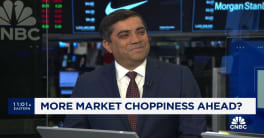Delinquency rates for commercial and multi-family mortgages continued to rise in CMBS portfolios during the second quarter of 2012 and now stand at 8.97 percent, 12 basis points from the first quarter rate. This rate has risen in 12 of the 14 quarters the Mortgage Bankers Association has tracked them. In the first quarter of 2009 the rate stood at 1.86 percent. Delinquency rates also increased for mortgages held by life insurance companies and Freddie Mac.
Mortgages held by life insurance companies went up only a slight 0.01 percent to 0.15 percent while loans held or insured by Freddie Mac increased 0.04 percentage points to 0.27 percent. Rates held by the other two investor groups declined; Fannie Mae's holdings had a rate decrease of 0.08 percentage points to 0.29 percent and the rate for loans held by FDIC-insured banks and thrifts decreased 0.34 point to 3.11 percent, the fifth consecutive quarter that rate has dropped. One reason for the discrepancies in delinquency rates is the extent of the delinquency considered "serious" by the investor. CMBS rates are 30+ delinquencies while 60+ is the benchmark for mortgages held by life insurance companies, Fannie Mae and Freddie Mac. Banks and thrifts regulated by FDIC consider 90+ days a serious delinquency.
Commercial and multifamily delinquency rates for life insurance companies, Fannie Mae and Freddie Mac all remain quite low, and the delinquency rate for bank-held loans continues to decline," said Jamie Woodwell, MBA's Vice President of Commercial Real Estate Research. "The delinquency rate for loans in CMBS continues to show higher and more sustained aggregate delinquency rates, much of which is driven by the large share of these loans in foreclosure or REO."
Construction and development loans are not included in the numbers presented here, but are included in many regulatory definitions of 'commercial real estate' despite the fact that they are often backed by single-family residential development projects rather than by office buildings, apartment buildings, shopping centers or other income-producing properties. The FDIC delinquency rates for bank and thrift held mortgages reported here do include loans backed by owner-occupied commercial properties.







